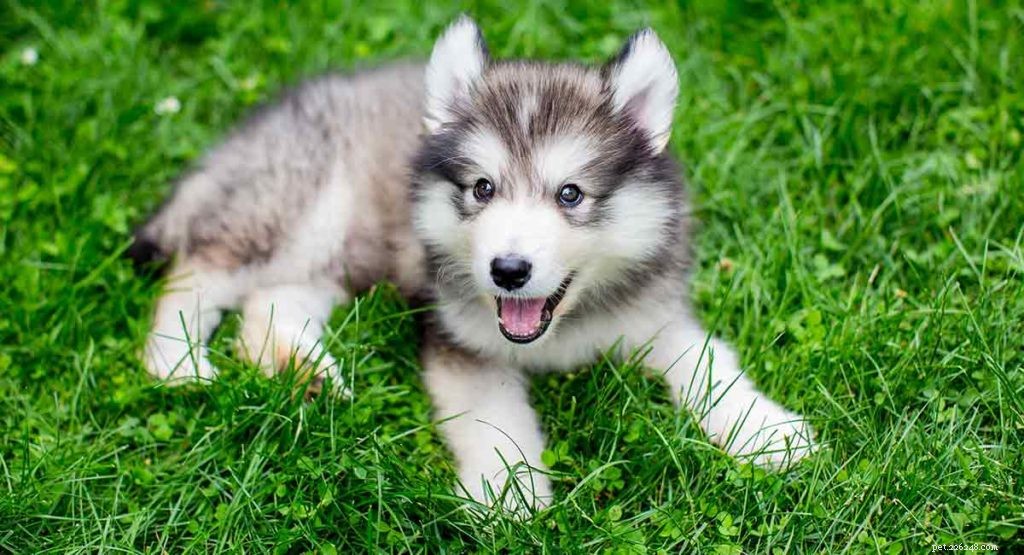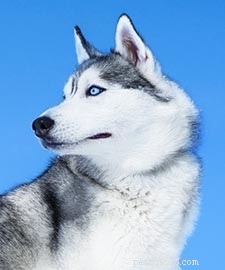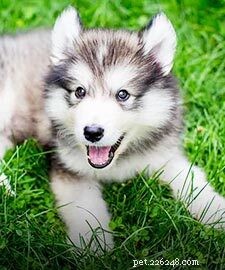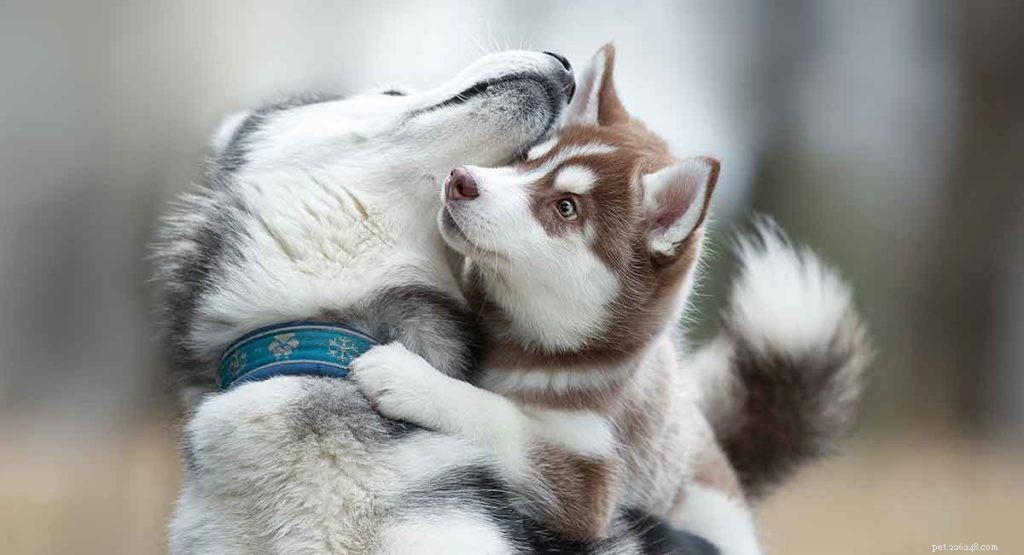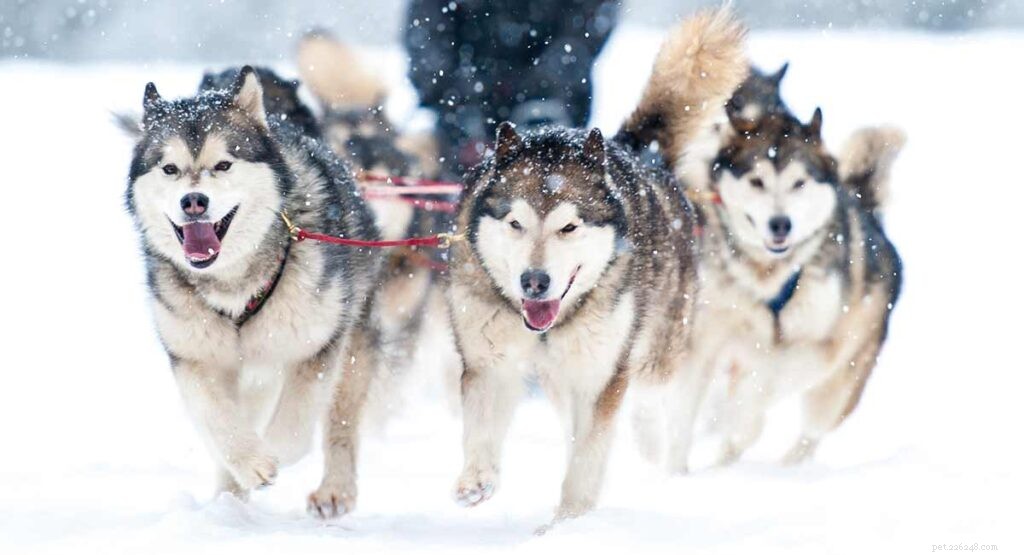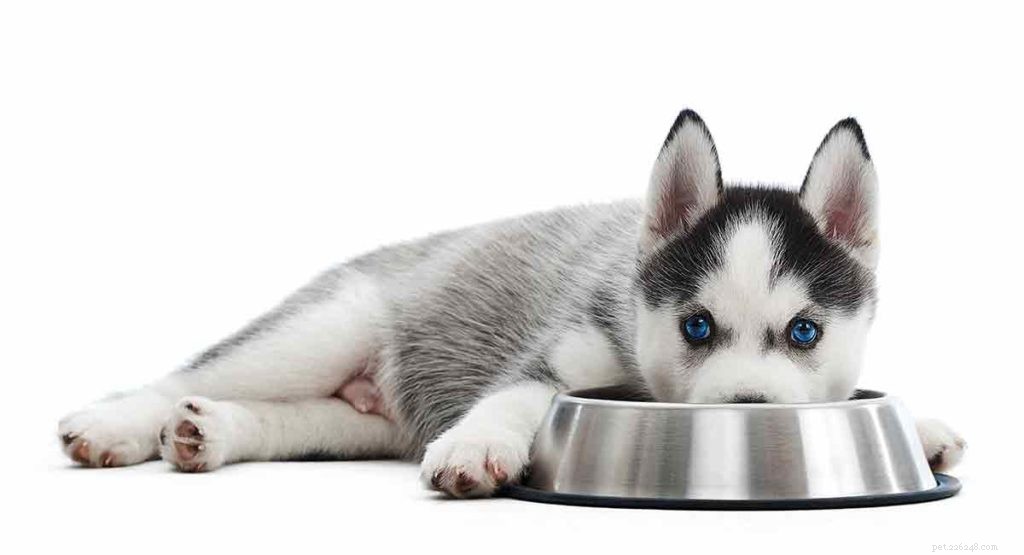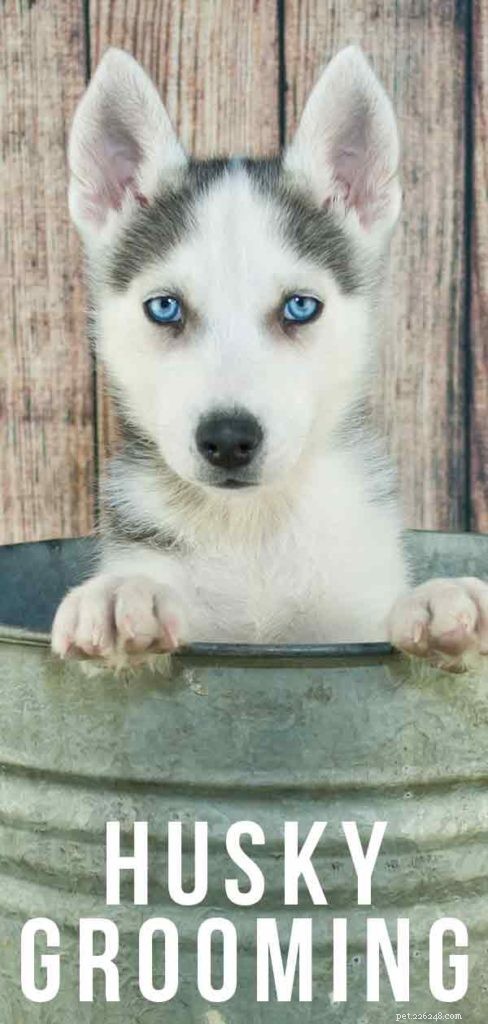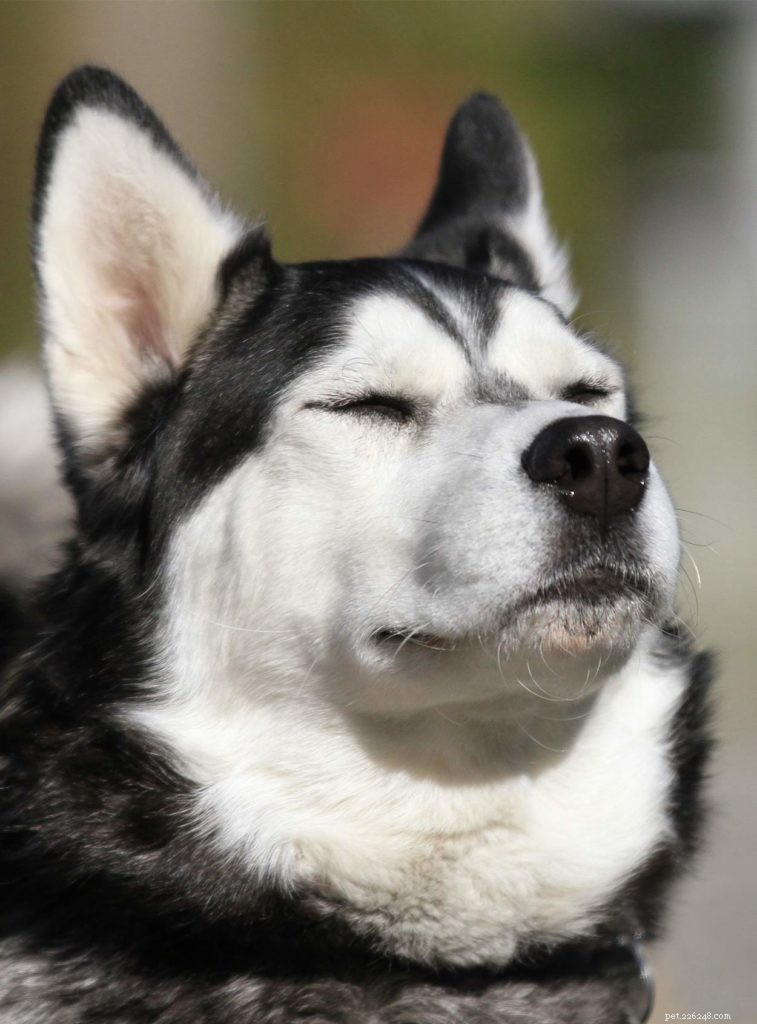Centro de informações sobre raças de cães Husky Siberiano
O Husky Siberiano é uma raça ártica originalmente usada como cães de trenó. Neste grande guia de Huskies Siberianos, você encontrará tudo o que sempre quis saber sobre a raça Husky. Temos fatos, diversão, fotos e vídeos de lindos Huskies. Juntamente com dicas para ajudá-lo a encontrar e cuidar de seu próprio cão Husky.
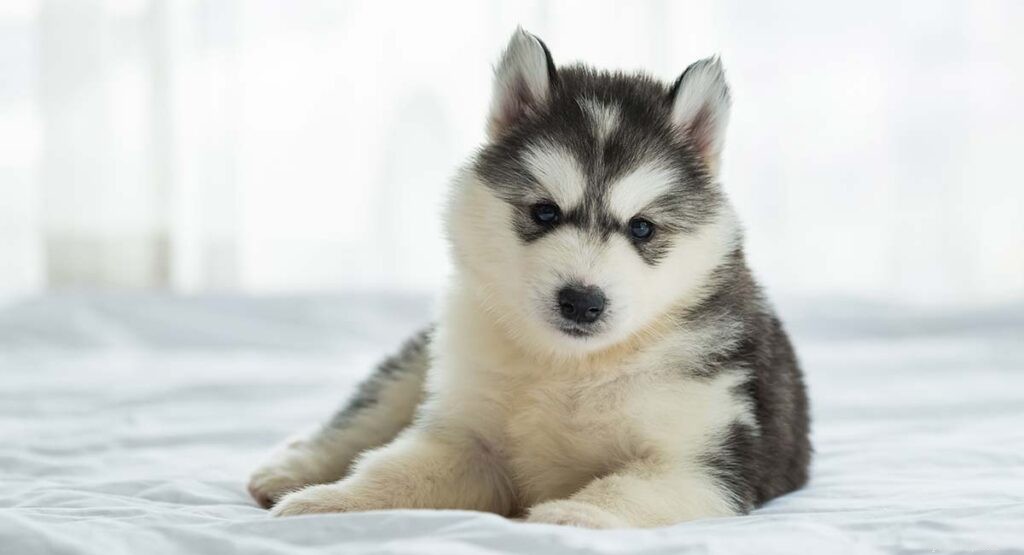
Estatísticas Rápidas:O Husky Siberiano
Popularidade14ª raça mais popular nos EUA FinalidadeCães de trenó originalmente, a maioria hoje são companheirosPeso40 a 60lbsAlturaAté 24 polegadasTemperamento Social, amigável, brincalhão. Divirta-se com outros cães. Custa $ 1.000 a $ 2.500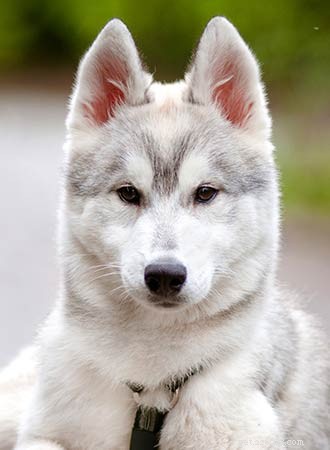
O que há neste guia?
- Perguntas frequentes sobre o Husky Siberiano
- História e origens do Husky
- Temperamento Husky
- Treinamento e cuidados com Husky
- Resgatando um Husky Siberiano
- Encontrando um filhote de Husky Siberiano
- Prós e contras dos Huskies Siberianos
Cada uma das seções abaixo está repleta de informações sobre esta raça distintamente bela.
Perguntas frequentes sobre o Husky Siberiano
Confira algumas das perguntas mais frequentes de nossos leitores nos links rápidos abaixo:
- Os Huskies Siberianos são bons cães de família?
- É fácil treinar um Husky Siberiano?
- Os Huskies ficam solitários?
- De quanto exercício um Husky Siberiano precisa?
- Os Huskies podem viver com gatos?
- Os Huskies Siberianos são bons animais de estimação para a família
Ou mergulhe direto em nossa análise detalhada desta incrível raça de cães. Vamos começar olhando de onde vem o Husky Siberiano.
Histórico e propósito original
Também conhecido como Arctic Husky, o Siberian Husky é membro do grupo de trabalho dos cães. Como seria de esperar, a raça é originária da Sibéria, onde tem uma história rica e estabelecida de viver e trabalhar com humanos.
Os Huskies Siberianos foram criados ao longo de milhares de anos como companheiros de caça, viagem e vida do povo semi-nômade Chukchi. O Husky foi exportado pela primeira vez para o Alasca e Canadá em 1908 para ser usado como cães de trenó.
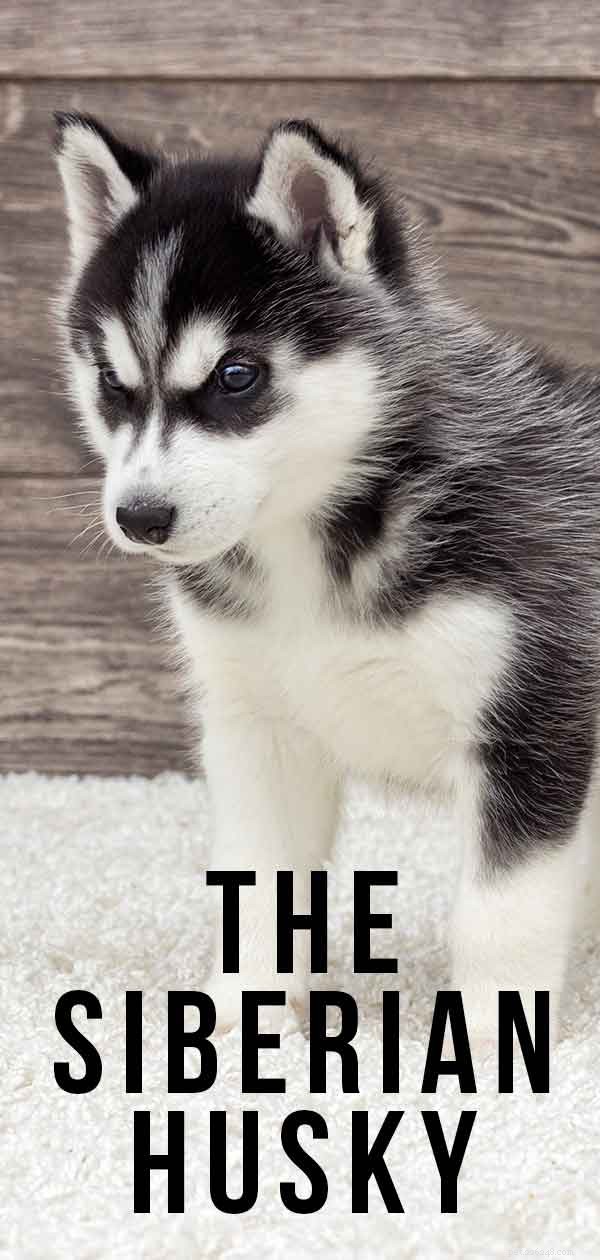
Sucesso inicial
Eles foram inicialmente ridicularizados por serem muito menores e menos pesados do que os atuais cães de trenó. Mas foram rapidamente reconhecidos como os corredores fortes e eficazes que são.
Em apenas alguns anos, esses cães poderosos estavam competindo regularmente e ganhando prêmios, e eram muito respeitados nos círculos de trenós puxados por trenós. Eles percorriam grandes distâncias e eram de longe as mais leves e rápidas das raças de cães de trenó.
Não foi até o início da década de 1940 que eles chegaram ao Reino Unido, tornando-se uma raça bem estabelecida aqui cerca de vinte anos depois, na década de 1960.
Conseguindo o Husky que conhecemos hoje
Até a década de 1990, os Huskies no Reino Unido eram criados predominantemente por um núcleo dedicado de criadores, que pretendia mantê-los como animais de estimação gentis, comunitários e saudáveis, companheiros de trabalho e shows.
No entanto, nos últimos anos, houve uma mudança nesse padrão, pois eles cresceram enormemente em popularidade, e criadores com diferentes padrões e objetivos surgiram para atender a essa demanda.
Os Huskies que você verá hoje são, portanto, mais variados em tipo e temperamento do que aqueles de apenas alguns anos atrás. Embora eles geralmente mantenham a aparência distinta de lobo com a qual estamos familiarizados.
Curiosidades sobre os Huskies Siberianos
Em 1925, o Husky Siberiano realmente ganhou destaque em uma escala maior, quando uma equipe de cães puxou um trenó carregando soro de difteria por mais de 600 milhas para levá-lo a uma população carente.
A partir deste ponto, eles foram exportados para o Canadá e a América, percorrendo os países e demonstrando suas proezas nas corridas.
Então, os Huskies têm até um histórico de salvar vidas! Eles são cães tão populares que você pode ver toneladas de celebridades que os possuem!
A lista inclui:Rita Ora, Jared Leto, Ben Stiller e Taylor Lautner!
Aparência do Husky Siberiano
O Husky Siberiano tem uma aparência muito parecida com um lobo. Com as proporções e características que definiram seus ancestrais, como orelhas eretas, proporções equilibradas e uma cauda de escova de garrafa ainda muito evidentes.
Construídos para resistência e velocidade, raramente são pesados. Você os verá se movendo com graça e fluidez.
Eles tinham que ser fortes para puxar trenós por longas distâncias e estar muito aptos para continuar a fazê-lo por horas a fio.
Casaco Husky
Talvez a característica mais proeminente do Husky seja sua pelagem.
As cores de pele de husky são incomuns em termos da gama aceita de tons.
O Kennel Club afirma que 'todas as cores e marcações, incluindo o branco' são permitidas. Isso não é algo que você vê na maioria das descrições padrão de raças de cães e é um tributo adequado à fabulosa variedade de tons roucos que você pode encontrar. Do branco mais claro ao marrom escuro, a uma combinação de todos os tons intermediários.
Sua pelagem está espalhada pelo corpo em uma pelagem dupla espessa e exuberante, de comprimento médio. Os pêlos individuais devem ser lisos e macios e macios ao toque.
Tamanho adulto
Os huskies siberianos machos em geral crescem para serem maiores e mais pesados do que suas contrapartes femininas. Com o cão médio pesando cerca de 50 libras e a cadela média cerca de 40 libras quando totalmente crescida.
Você pode esperar que seu husky macho cresça até 60 cm de altura, com cadelas um pouco mais curtas, no máximo, cerca de 56 cm, de acordo com o padrão do English Kennel Club.
Os huskies podem ser muito menores, mas isso pode trazer alguns problemas de saúde maiores.
Temperamento do Husky Siberiano
Os Huskies Siberianos têm a reputação de serem tão frios quanto o clima de onde vêm, mas isso definitivamente não é verdade. Embora eles certamente não sejam cães grudentos fisicamente, eles acham essencial estar perto de suas famílias caninas e humanas.
Eles adoram estar em companhia e rapidamente ficarão chateados se forem deixados sozinhos por longos períodos de tempo.
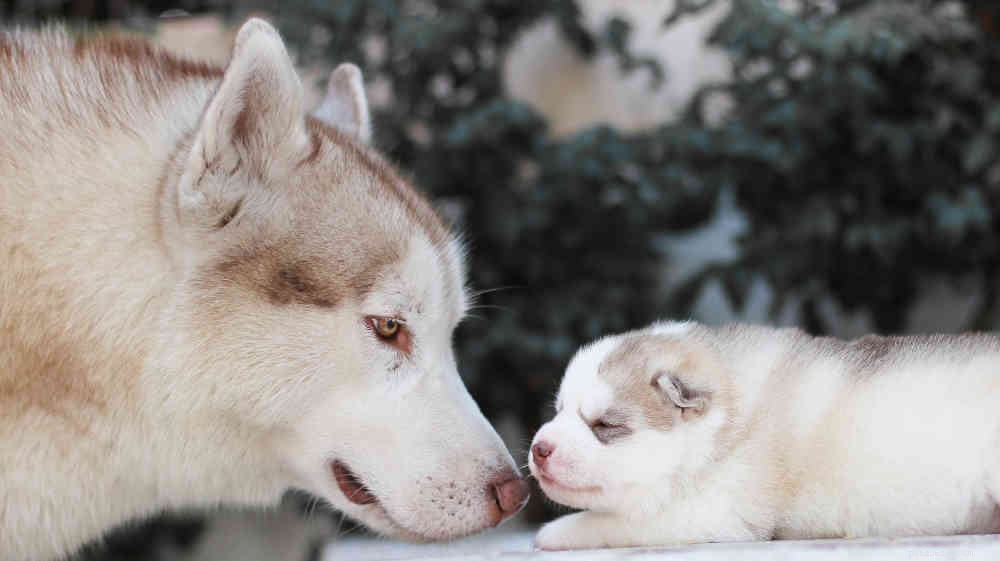
Os Huskies são amigáveis?
Pode-se dizer que os huskies são reservados por natureza, mas certamente não são suspeitos. Eles não têm antecedentes de guarda e geralmente aceitam outros cães e humanos.
Eles não guardarão sua casa para você, mas também não farão com que seus convidados se sintam indesejados.
Não confunda sua gentileza com estranhos como falta de lealdade e amor por sua matilha, essa natureza comunal é um grande bônus em um cão de estimação e algo a ser valorizado. Isso não desvaloriza o amor deles por você, mas aumenta.
Eles também são incrivelmente brincalhões, adorando gastar sua energia excessiva pulando.
Eles se dão bem com outros cães?
A imagem clássica do husky puxando um trenó com seus amigos lhe dirá que eles geralmente são bons com outros cães. Na verdade, eles raramente são mais felizes do que quando estão na companhia de seus companheiros.
No entanto, isso não significa que eles vão tolerar que outro cão os desafie. Eles podem não começar uma briga com outro cachorro, mas se outro cachorro pegar um com eles, provavelmente terminarão.
Portanto, é uma boa ideia evitar cães muito pequenos e 'bocadinhos' que você encontra quando sai com seu Husky, para a segurança do pequeno mal-humorado.
Eles podem viver com gatos?
Se um Husky viveu com um gato desde o primeiro dia, provavelmente continuará a aceitá-lo como parte de sua casa. No entanto, seria preferível não lhes dar a oportunidade de testar essa teoria.
Como raça, eles são muito atraídos por presas e são conhecidos por matar gatos, bem como outros animais de estimação de roedores. Não vão apenas persegui-los ou incomodá-los, muitas vezes eles também vão pegar e matar. Isso é provavelmente o resultado de ter sido permitido por gerações na Sibéria para pegar seu próprio jantar.
Portanto, não é recomendável correr o risco e, se você tiver um gato, procure outras opções de raças por enquanto.
Os Huskies são bons com crianças?
Os Huskies Siberianos são conhecidos por serem bons com as crianças. Por centenas de anos eles foram mantidos como companheiros de trabalho e vida pelo povo Chukchi, que trabalhava com eles, mas também vivia com eles em locais muito próximos.
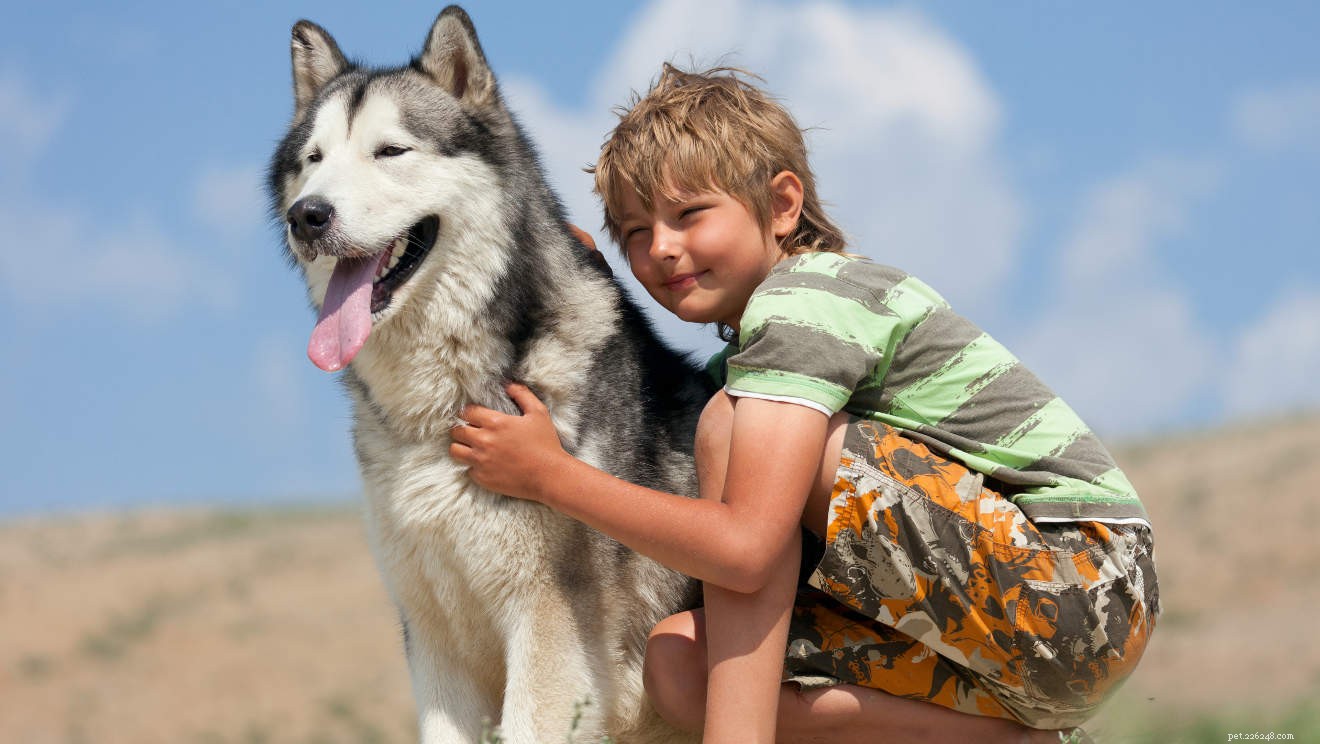
A probabilidade é que qualquer mau comportamento para as crianças com quem residiam não fosse tolerado e, portanto, os cães que foram autorizados a continuar a produzir novos filhotes eram apenas aqueles que estavam felizes em serem submetidos a comportamentos imprevisíveis das crianças.
Isso provavelmente contribui para o fato de que os Huskies não têm instinto de guarda e estão em casa na companhia de pessoas de qualquer idade.
Para seu crédito, eles também fazem saber quando estão infelizes, então dê sinais claros para suas famílias para permitir que eles desistam do comportamento indesejado antes que ele saia do controle.
Mas lembre-se
Lembre-se, porém, que mesmo o cachorro mais legal ainda é um cachorro. As crianças nunca devem antagonizar ou assediar cães e devem sempre ser supervisionadas em sua companhia.
O uso de uma caixa para dar ao cão a capacidade de ter seu próprio espaço e lugar para onde fugir ajudará a evitar que ele fique indevidamente chateado.
A outra razão para supervisionar suas atividades juntos é que os huskies são cães muito brincalhões e saltitantes. Crianças pequenas podem ser acidentalmente derrubadas e esbarradas por seus companheiros grandes e fofos.
Os Huskies latem muito?
Huskies são muito vocais, embora não se possa dizer que latem muito. Eles não são uma raça naturalmente barulhenta ou louca por latidos como os terriers, por exemplo. Eles são muito mais como membros da família dos cães, com tendência a uivar.
Não apenas eles se parecem muito com os lobos de seu passado antigo, mas soam exatamente como eles. Um barulho assombroso e prolongado, não é do agrado de todos. Especialmente quando continuado por longos períodos de tempo ou em horas anti-sociais da noite.
Se você tem mais de um também pode ter uma tendência a uivar comunitariamente. Essa resposta também pode ser acionada por sirenes, que não são ideais para a vida movimentada do centro da cidade.
Se você tem vizinhos próximos ou mora em uma área construída, seu Husky em crescimento pode causar problemas com os que moram nas proximidades. Eles são mais adequados para locais mais remotos por esse motivo.
Treinando seu Husky Siberiano
O Husky Siberiano não é conhecido por sua inteligência cooperativa, pelo menos não da forma como a avaliaríamos em termos humanos. Isso ocorre porque eles não foram criados para seguir instruções complexas e trabalhar com humanos da mesma maneira que os cães pastores ou cães de caça.
Isso não significa que eles sejam estúpidos ou incapazes de aprender, especialmente com técnicas modernas de treinamento de reforço. Eles são simplesmente motivados por coisas diferentes, ou seja, sua presa e necessidade de correr.
A teoria da dominância está desatualizada agora, então você ficará satisfeito em saber que não há necessidade de fazer seu doce Husky pensar que você governa o poleiro. Eles também são cães incrivelmente resistentes, então a punição, mesmo que você prefira como metodologia, ainda não seria apropriada para esta raça.
Melhores métodos de treinamento
Eles farão melhor com um treinamento consistente de reforço positivo desde o dia em que chegarem em casa com você, para ajudá-los a vê-lo como uma fonte brilhante de comida muito saborosa e jogos super divertidos.
Treinar em uma área totalmente fechada é essencial para os proprietários de Husky, assim como começar desde o primeiro dia e estabelecer bons hábitos com treinamento de reforço positivo.
Mesmo o husky animado e independente terá uma fase dependente quando filhote. É essencial que você aproveite ao máximo esses primeiros dias e semanas para estabelecer grandes bases para a obediência futura. Principalmente no que diz respeito ao recall.
O treino de salto com clicker e o treinamento de recordação devem ser suas prioridades para manter seus passeios futuros juntos menos estressantes.
Exercitando um Husky Siberiano
Uma consideração importante para um potencial proprietário de um Husky, talvez o mais importante, é a necessidade de exercício.
Eles têm um desespero profundamente enraizado e precisam correr. Esses cães são maratonistas, não velocistas. Eles precisam de uma quantidade enorme de exercício em ritmo constante. Talvez até duas horas todos os dias.
Se você é um corredor, ciclista ou caminhante, seu Husky se deliciará em fazer companhia a você em dicas estendidas ao ar livre. Eles também adoram ser trabalhados à maneira de seus ancestrais, puxando trenós em gangues e correndo.
Apesar de seu amor pelo exercício, outro aspecto complicado dos cuidados com o Husky é sua inclinação a fugir quando está fora de casa. Você precisará se esforçar muito para mantê-lo seguro, de uma maneira que não necessariamente precise se preocupar com outra raça de cachorro.
Melhor maneira de exercitar um Husky adulto
O Husky Siberiano tem um impulso de presa incrivelmente alto, o que significa que, a menos que ele tenha uma lembrança sólida, é provável que o perca de vista em uma caminhada regular sem guia.
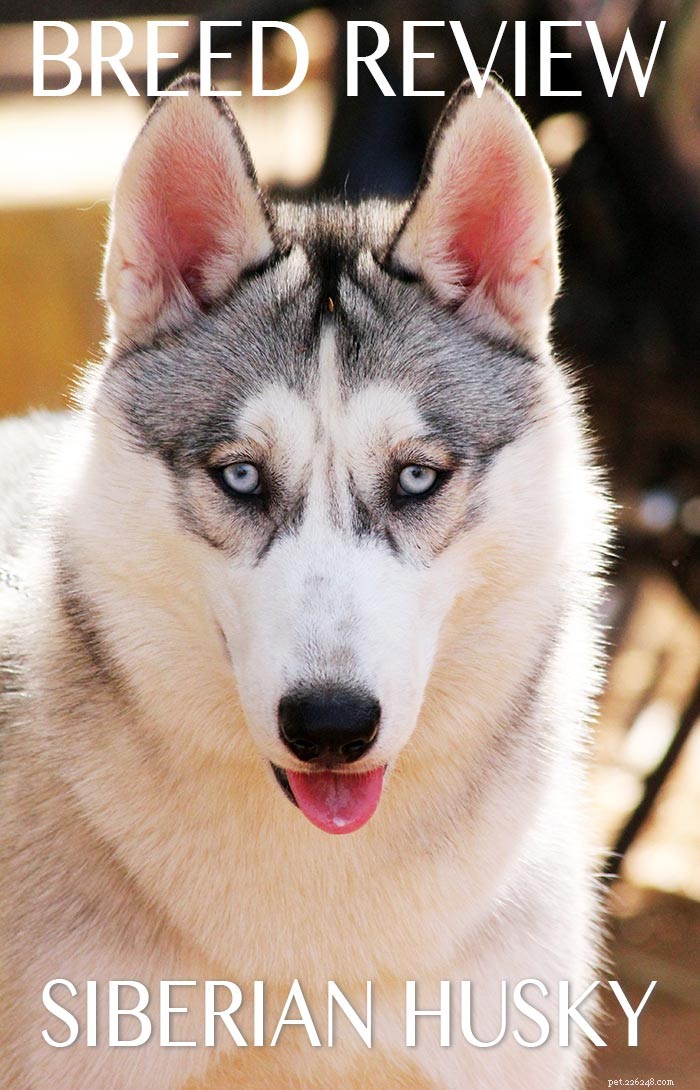
O arnês e a linha são aconselhados por muitos criadores, pois um husky adulto tende a vagar ou fugir perseguindo a vida selvagem. Eles têm um forte instinto de correr e não apenas perseguir, mas matar presas.
Infelizmente, os Huskies são criados para correr e puxar. Isso significa que eles também não são o animal mais fácil de se ter na coleira. Um arnês é, portanto, essencial não apenas para evitar que seu cão se engasgue com uma coleira, mas também para ajudá-lo a manter o controle.
Importância do treinamento de recall
Whilst training a good recall with a husky will be hard due to his natural impulses, it is something that you will benefit hugely from committing to and is by no means an impossible dream.
But it will need to be intensely proofed throughout the first months and possibly even years of the lives, and even then it would not be wise to let them off leash in an area where there is a chance of wildlife or local cats poking their heads up for a look.
It is also tough to teach a recall as the Husky loves running so much, making this more rewarding to him than any treat you might have in your pocket to offer him.
The safest way to exercise a Husky is in an enclosed space, potentially with other well-behaved dogs for company.
Siberian Husky Health and Care
When compared to some breeds of dog, Siberian Huskies are rather healthy, often living into their mid-teens.
However, there are some common Husky health issues that can impact this breed. You will need to understand what they are and how best to lower the odds of your puppy growing to suffer from them before you choose him.
Vamos dar uma olhada.
Eye Problems
Eye problems are sadly not uncommon in the Siberian Husky breed, and estimates come in at around 10% of them being affected in some way.
These eye diseases come in several different forms, so it’s important to be aware of each one and what you can do to reduce the chances of your new puppy being affected.
Uveodermatologic Syndrome
Vogt-Kyoanagi-Harada, also known as uveodermatologic syndrome. This is a nasty condition that frequently recurs and often results in blindness. Symptoms include red painful eyes, skin pigmentation and whitening of the hair.
Cataracts
Thought to affect 10% of the breed, cataracts are of concern to husky enthusiasts.
Research is currently being carried out to discover more about their prevalence in this breed, and it is hoped that a DNA test will be available for breeders to use in the future. However, at the moment you will need to ask your breeder whether there is a history of them in your pup’s parents lines.
Progressive Retinal Atrophy
Progressive retinal atrophy is a common issue amongst pedigree dogs of any breed, and is seen in huskies. Fortunately, the Optigen test is available, which wil tell you whether your puppy’s parents are affected.
Make sure both parents have been shown to be Optigen clear before agreeing to your new pup to ensure that he will not become blind as a result of PRA.
And More…
Entropion and corneal dystrophy although less common can also impact upon the Siberian Husky’s health.
As you can see, eye problems are a serious matter for this breed. There have been attempts over a couple of periods in the past for eye registries to be set up to address this problem, both for the general dog population and for Siberian Huskies specifically.
If you are purchasing a puppy, you can ask the breeder to provide evidence their dogs are SHOR or CERF registered. These lists require dogs to have been eye tested and therefore give you a reduced chance of having an affected puppy from their progeny.
Skin Problems
Skin problems in Huskies are fairly common too. With two main culprits, follicular dysplasia and the results of zinc deficiency.
Follicular Dysplasia causes patches of hair loss and scaly sore skin. Genetic condition that can be treated with medicated shampoos, but cannot be cured. Usually displayed signs from four months onwards.
Zinc deficiency is a big problem for some Huskies. Their original diet was very high in fish and fat. The lack of zinc in modern diets can cause a condition known as zinc responsive dermatitis. Where the low levels result in itching and fur loss. Fortunately, this is easily treated by your vet, with a zinc additive.
Hearing Problems
Deafness can be a factor for Husky owners. Although this is not life-threatening, it is an inconvenience for your dog and you as an owner and therefore best avoided.
Deafness in dogs is often associated with the white pigment in their fur, therefore white Huskies are more likely to be affected with this condition.
This variety of deafness is normally apparent from the time the pup’s ear canals are open at a few weeks old.
Displasia da anca
For a larger breed of the dog, the Siberian Husky is refreshingly low in terms of hip dysplasia. Possibly due to their being bred as running dogs, and therefore natural selection allowing the breeding of those with good joints in their early days.
This does not mean that potential buyers need not worry though, as your husky will love to exercise so much he will need to be in excellent health. Make sure you see the hip certificates of both parents before you purchase a puppy regardless.
Other Common Problems
Other generalised health issues affecting the breed include Hypothyroidism, Bloat and Haemophilia. All of which a Husky has an elevated chance of suffering from.
Any condition that a Husky may suffer from should have been considered by your breeder. Ensure that any health tests which could potentially be carried out have been.
Any conditions that there are no tests for should be discussed, with reference to the pups parents, grandparents and ideally great-grandparents too.
Your breeder should appear open and honest on all counts, and demonstrate that they have actively tried to breed only from healthy examples of these wonderful dogs.
General Care
Although Huskies are not notorious picky eaters, you will need to give careful consideration to their dietary needs. This will reduce the chance of them suffering from zinc deficiency as mentioned above, as well as catering to their established digestive systems.
High cereal or carbohydrate content in kibble is not recommended for Siberian Huskies.
You can also help to reduce the chances of your puppy suffering by feeding him on a higher protein diet, with oily fish.
Raw food diet with a generous quantity of fish would suit most Huskies best. A purely raw diet high in fish is ideal for this breed.
Grooming Requirements
The Siberian Husky is not difficult to groom. Their coat is medium length, and although it looks very fluffy it is actually easy to manage.
Twice a week brushing will suffice to keep it looking great, although you may choose to do so more often to decrease the amount of fur they shed in your home.
Huskies moult all year round, but excessively shed twice a year in Spring and Autumn.
Lots of excess hair will be spread around your house, however careful you are.
A good vacuum cleaner that is specifically designed with pet hair removal in mind is vital.
You can use this and regular outdoor grooming of your Siberian Husky to stay on top of the shed fur situation.
Do Siberian Huskies make Good Family Pets?
Siberian Huskies can make fabulous pets in the right homes. But they are not a perfect fit for every family, as they have some unusual requirements.
To be the right home for a Husky, you need to have a lot of free time. Both to dedicate to training and to exercising this high drive dog.
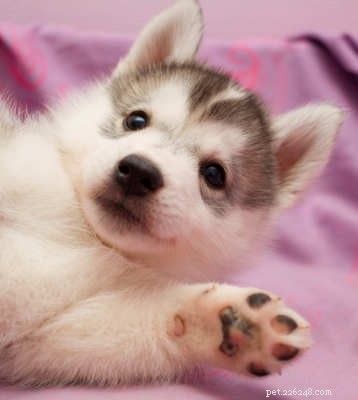
The house itself does not need to be massive, although you do need to have space for a large dog and his wagging tail to relax and pad about. An enclosed garden however, is essential.
Things to Remember
Siberian Huskies are notorious escape artists. They love digging and can jump very high. You will need a six foot fence at least, with at least a few inches of foundation under the ground.
You will preferably have no close neighbours, or ones who are very tolerant when it comes to howling.
Your dog will also run a lot, so if you are garden-proud you will need a dedicated area for your husky to exercise, with a secured section for your treasured plants to avoid a daily trampling.
A sandpit for them to dig in would be a great addition.
What if I Work Full Time?
Combining any puppy and full time work is tough going without taking time off or employing help for several weeks. With a Husky, this issue is magnified.
They love company, and become miserable and bored when left alone for hours This will inevitably lead to destructive behavior and howling. Not great for your home or your neighbours.
Ways to Combat This
If you work full time and have your heart set on a Husky puppy you will need to make arrangements for full time doggy day care. Either at a doggy day care center or with a family member who is happy to look after them whilst you are out. Unfortunately, a dog walker calling in once a day will probably not suffice given his great need for companionship.
On the bright side, any relative who agrees to spend the day with them should be in very easy and fun company, as long as you have given them a good walk before dropping them off.
If you are confident given what you have read above that you have the time, space, and situation appropriate for a Husky then the next thing you need to do is make sure you pick the right puppy.
Rescuing a Siberian Husky
If you’re not fussed about getting a puppy, consider rescue dogs. This is a great way at giving a Siberian Husky a second chance at a great home.
Plus, rescue centers will normally be able to give you a bit more information about the personality of the dog you’re welcoming home.
Click here to jump to our list of Husky rescue societies.
Finding a Siberian Husky Puppy
In the past ten years the popularity of the Siberian Husky has soured and as a result a lot of unethical or misguided people have begun to breed them.
It is vital that you pick your puppy from a breeder who is interested in the continued health of the breed and not just looking to make money.
How to Spot a Reputable Breeder
The right husky breeder will ask you a lot of questions. They will seem very nosey, asking about your personal situation. Where you live, how you will devote time and energy to your puppy in the early days and throughout his life.
They will want to assure themselves that you are the right home for their precious puppy. Please don’t be put off if they seem intrusive, this is actually a really good sign in a breeder.
They will probably not breed any other types of dogs. If they have several litters from different breeds, especially those from different groups of dogs (toy dogs, for example), they might not be the right breeder for you. Take a look at this article for how to spot a puppy farm, because they are not as easy to pick out as you might think.
Finding a Healthy Puppy
A good breeder should be open and clear about the dog’s parentage, providing you with certificates to back up their health testing claims. The dog should be a part of the family and have a purpose in their lives beyond making puppies.
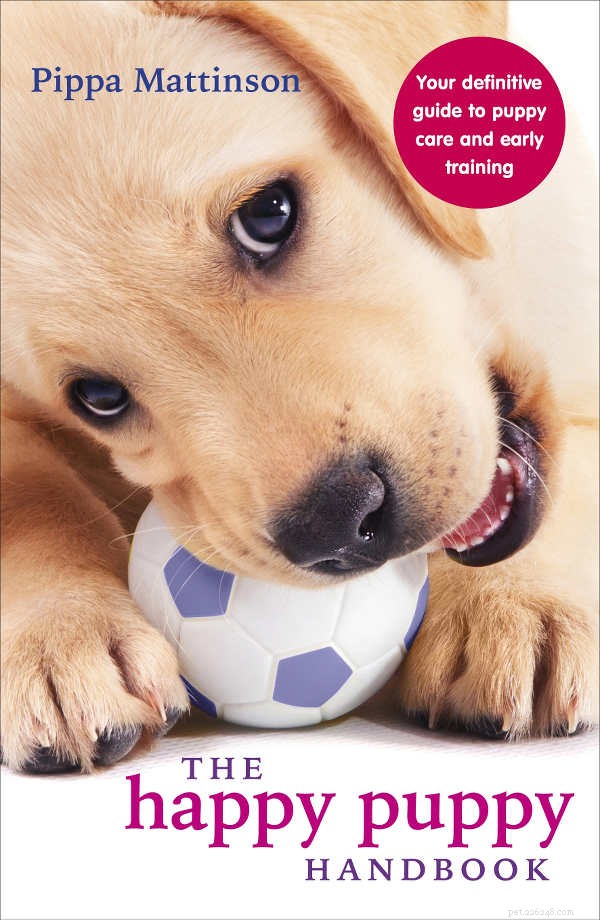
The mother of the pups should be quiet and confident. She won’t necessarily want to smother you in kisses, but she should seem at ease in the company of strangers and have a relaxed demeanour as well as a healthy appearance.
Siberian Husky Cost
Do not pick the cheapest Siberian Husky puppy. Remember, the majority of their cost to you will in fact come over the next 15 years or so of their lives, in terms of insurance, feeding and equipment.
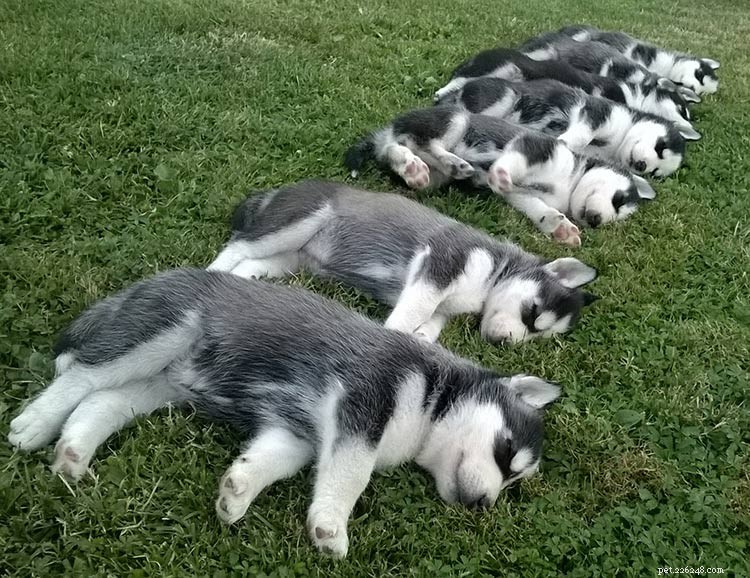
A good breeder will have carried out all the relevant health tests, which do not come cheaply. You will probably pay between, depending upon where in the country you are.
Raising a Siberian Husky Puppy
Caring for a vulnerable Siberian Husky puppy is a big responsibility. There are some great guides to help you with all aspects of puppy care and training.
You’ll find them listed on our puppy care page.
Popular Siberian Husky Breed Mixes
If you are looking for a Siberian Husky puppy, then you will probably come across numerous adverts for Siberian Husky Mix puppies.
Buying a mix breed puppy is not necessarily a bad thing. Cross bred dogs in general live longer, and it is good for the general gene pool of pet dogs that mixes between pure breeds occur.
This said, make sure the breeder is crossing two dogs together for the right reasons.
Both parents should still be fully health tested for any conditions that might affect their breed. You as a puppy buyer should be aware that when buying a mix breed puppy they could inherit physical and temperament characteristics from either parent breed. Make sure that you meet both parents before committing to your puppy.
Take a Look at our Guides
We’ve got some great guides to Husky mixes below. Take a look at a few of them to see if a Husky mix could be right for you.
- Huskimo – The Siberian Husky And American Eskimo Mix
- Pitbull Husky Mix
- Golden Retriever Husky Mix
- German Shepherd Husky Mix
- Husky Beagle Mix
Comparing the Siberian Husky with Other Breeds
If you’ve ever wondered how a Siberian Husky really compares with other breeds of dog, we’ve got guides to help with that too!
Check them out here:
- Alaskan Husky Vs Siberian Husky
- Alaskan Malamute Vs Siberian Husky
Raças Semelhantes
Now we’ve looked at everything to do with the Siberian Husky, you might be unsure if it’s right for you.
If you’re still on the fence, you might want to take a look at some of these similar breeds to see if they would be better suited to your family:
- Alaskan Klee Kai
- Kai Ken
- German Shepherd
- Icelandic Sheepdog
- Wirehaired Pointing Griffon
Pros And Cons of Getting A Siberian Husky
Let’s recap all of the pros and cons of the Siberian Husky breed.
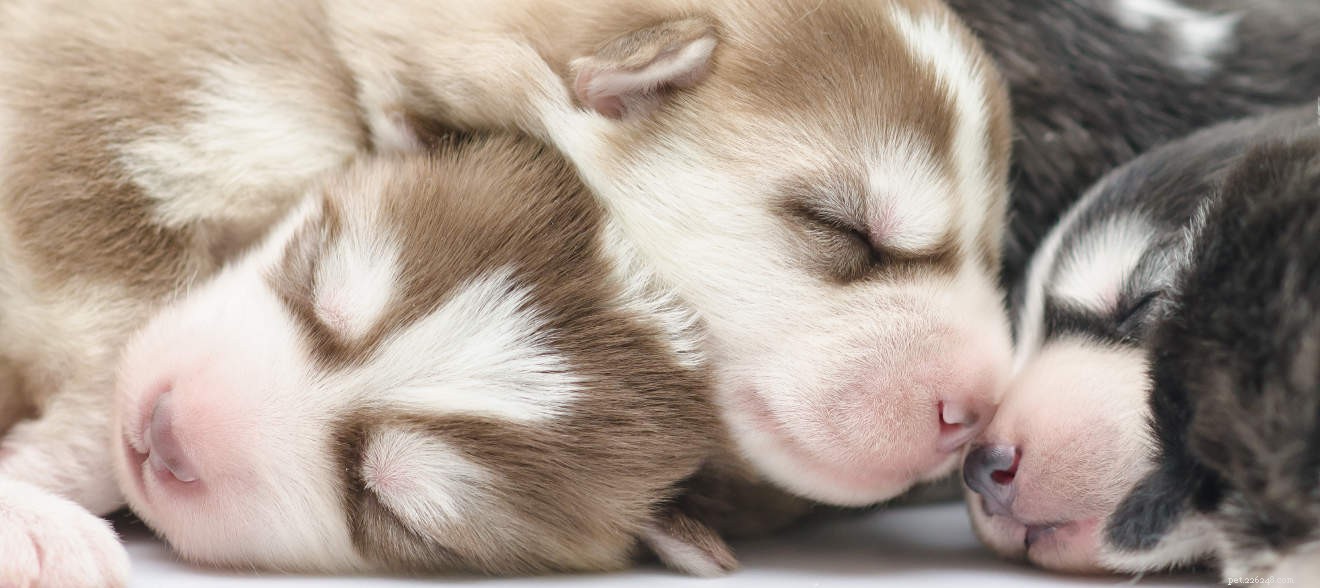
Contras
Huskies are loud breeds that like to ‘talk’ to their families.
They cannot be left alone for long periods of time.
These dogs require a LOT of exercise.
Siberians aren’t suitable for homes with other small pets.
They also have high grooming requirements.
Prós
Huskies are really friendly pets!
They get on well with other dogs and children.
If you’re an active family, they’ll be a great fit.
They aren’t likely to show guarding tendencies to strangers.
Siberian Husky Products and Accessories
Preparing for a puppy is hard enough. But when it’s an energetic, playful Husky puppy, it can seem even harder!
Luckily we’ve got plenty of amazing product guides to help you get the absolute best.
Check them out here.
- Best Food For Husky Puppy Health and Happiness
- Husky Gifts – Great Gift Ideas for Your Husky Loving Friend
- Husky Grooming Tools:Top Tips for a Shiny Coat
Siberian Husky Breed Rescues
Here are some breed centers that specialise in Siberian Huskies.
USA
- Free Spirit Husky Rescue
- Siberian Husky Rescue
- Forever Husky
UK
- Saint Sled Dog Rescue
- 8 Below Husky Rescue
- HEART Welfare
Canada
- Halo Husky Haven
- SHARP Rescue
- Canadian Inuit Dogs
Australia
- Siberian Husky Club NSW
- Artic Rescue Victoria
- Homes For Huskies
If you know of any others, please mention them in the comments so we can add to this list!
And make sure to tell us all about your own Siberian Husky!
Referências e recursos
- Gough A, Thomas A, O’Neill D. 2018 Breed Predispositions to Disease In Dogs and Cats. Wiley Blackwell
- O’Neill et al. 2013. Longevity and Mortality of Dogs Owned In England. The Veterinary Journal
- Schalamon et al. 2006. Analysis of Dog Bites In Children Who Are Younger Than 17 Years. Pediatrics
- Duffy D et al. Breed differences in canine aggression. Applied Animal Behavior Science 2008
- Strain G. Deafness prevalence and pigmentation and gender associations in dog breeds at risk. The Veterinary Journal 2004
- Adams VJ, et al. 2010. Results of a Survey of UK Purebred Dogs. Journal of Small Animal Practice.
- Siberian Husky Club of America
- Siberian Husky Club of Great Britain
- Fatos e informações sobre a raça de cães Husky da Pomerânia
- Como criar o Husky Siberiano
- Informações sobre a raça de cães Husky Siberiano
- Centro de informações sobre a raça de cães Akita – Um guia completo para o Akita
- Centro de informações sobre a raça de cães Border Collie
- Centro de informações sobre a raça de cães Bull Terrier
- Centro de informações sobre raças de cães Chesapeake Bay Retriever


